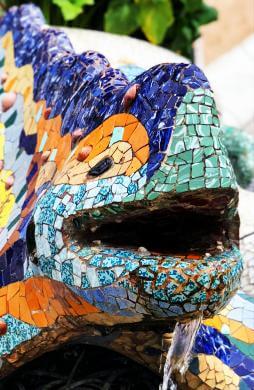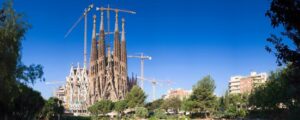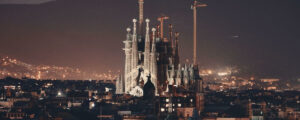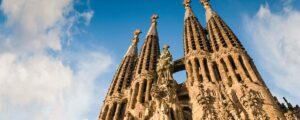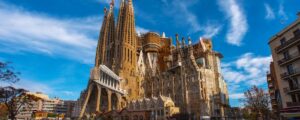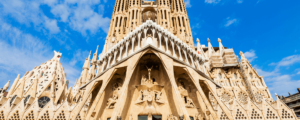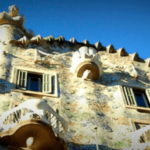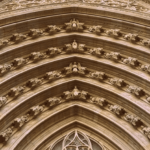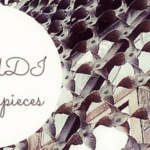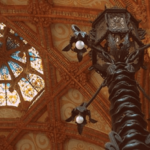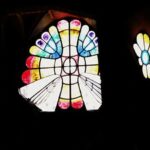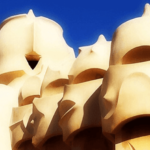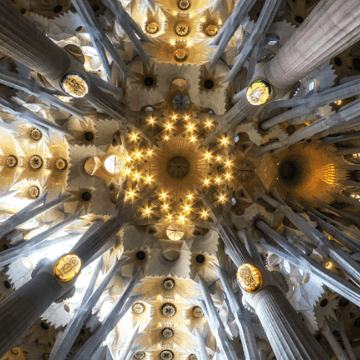
What’s La Sagrada Familia Interior Like?
ALL ABOUT LA SAGRADA FAMILIA INSIDE
If there is one MUST-SEE place in town, that’s definitely the Sagrada Familia church. Started in 1882 by the architect Francesc de Paula i Villar, Gaudi took over the project a year later and transformed it into his masterpiece, his passion and obsession. It won’t be finished until 2026-30 (approx.), but the inside was finally completed, freed of scaffolding and consecrated by Pope Benedict in 2010.
Before the completion of the inside naves in 2010 many people were content to just see it from outside and spare the cost of the tickets. But after that, the Barcelona Sagrada Familia interior has become a must: if there’s one site where you need to spend your money, this is the Sagrada Familia church.
Things that make the interior of the Sagrada Familia inside unique:
1
The hanging model
The basement of the Sagrada Familia Church houses an architecture museum that connects the Nativity and the Passion Façades underground. There you can learn about Gaudi’s project, the evolution of the works, the history of the Sagrada Familia basilica and see plaster models and drawings.
The star of the museum in the basement is this polifunicular model, a replica of the one that Gaudi created to design the church of the Colònia Güell for his best friend Eusebi Güell. It’s fascinating how he’d only need strings and little bags of sand to calculate what our architects now do on their computers…
That church was the lab where Gaudi tested the engineering techniques he wanted to use in the Church of the Sagrada Familia… in a much more advanced and challenging way.
2
The soldier with 6 toes
It’s hard to see the sixth toe, but you can make it out in the Façade of the Nativity. Or in a good guidebook…
3
The stain-glass colors reflecting on the columns
Once you enter the main nave, you’ll be at awe: it’s so out of this world! My favorite time is in autumn and spring, when the sunlight reflects the stain-glass colors in the columns and makes you feel you are inside a magical forest of stone.
As for our preferred time to visit the Sagrada Familia of Barcelona, we love the lights during autumn and winter, when the sun is lower and the colors are brighter (if it’s sunny outside).
4
The cryptogram that adds up to 33
5
Gaudi’s tomb
The architect Antoni Gaudi is buried in the basement of the Basilica of the Sagrada Familia. You don’t need to pay to see this one, as the crypt is open for prayers and services and it’s free of charge (however, it only opens for mass). You can also see it from inside the basilica (corridor behind the altar) and the museum.
Not being recognized as the great master he was when he was run over by a tram, he died in a hospital for poor people. But then, over 100,000 people came to pay their respects in his funeral. Sad end for an incredible man.
6
Sagrada Família Towers
There are currently two elevators: one in each façade. While the one in the Nativity side is only way-up, then you must walk down, in the one at the Passion side you are also given the possibility to take the elevator down again – bear this in mind if you are scared of heights or have weak knees!
BTW, did you know that an electrifying chapter of Dan Brown’s Origin novel happened here? I recommend you get your elevator tickets online when you get your Sagrada Familia tickets online, as they sell out quickly. But are they really worth it?
Well, that depends on what are your goals: if you are expecting great city views, there are other sites that will serve you better (Montjuic Hill and La Pedrera being our favorite). The windows were designed to send the sound of the bells down to the ground, not to show people’s the views, so most of the time the views aren’t that great.
7
So is Gaudi's Sagrada Familia inside worth it?
Yes, going inside Sagrada Familia is totally worth it! If you don’t, you’ll regret it the rest of your life. It’s a church like no other church you’ve seen it. It’s the second largest basilica in Spain… and the world (after the Basilica of Saint Peter in the Vatican). And the combination of engineering and beauty will blow your mind.
The best way to enjoy it is taking a private tour: you get to skip lines and you have an expert tour guide 100% dedicated to you, your interests and questions. No sharing with other people (that might be annoying).
But if you prefer to go on your own, make sure to buy your tickets in advance. After the pandemic they eliminated their physical ticket offices and purchasing them online is the only option. Plus they typically sell out days (or even weeks) in advance. You’ve been warned.
8
Other recommended posts to help you plan your visit inside Gaudi's Cathedral
Ok, maybe I shouldn’t say “cathedral”: the Sagrada Familia is not a Cathedral. The honor of being the Barcelona Cathedral is reserved to the Cathedral of the Holy Cross and Saint Eulalia in the Gothic Quarter. Because a Cathedral is the headquarters of the Bishopric, and that’s where they’ve been for many centuries.
La Sagrada Familia is first of all a Barcelona church, a parish church serving the neighborhood. It’s also an Expiatory Temple built to expire (to forgive) people’s sins through their donations. And it’s also a Minor Basilica after Pope Benedict declared it so on the day of its dedication on November 7, 2010.
Will you be going inside La Sagrada Familia?
Marta
MORE BARCELONA TIPS FOR YOU:
SHARE WITH YOUR TRAVEL MATES
RESEARCHING FOR A TRIP IS TIME-CONSUMING…
Need more inspiration?
Our 100% FREE Barcelona Collection will give you everything you need to organize the trip of your lifetime to Barcelona.
BEST INSIDER TIPS FROM THE PROS!
